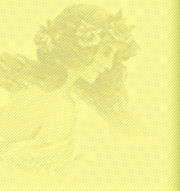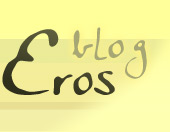How “The Joy Of Sex” Was Illustrated
Susie Bright can call it “a tewwible sex ed book” if she wants to, and yeah, it had some serious flaws. But I don’t think it’s fair to say that without considering what you are comparing it to. As one of the most widely sold sex ed books of its generation (in a class with perhaps one other member, I’m thinking of Everything You Ever Wanted To Know About Sex But Were Afraid To Ask) and in a world where there was no sex information freely available to minors, Joy of Sex became “the first serious sex information we ever saw” to a lot of people of my generation. Whatever its flaws (and I remember dismissing parts of it as “some serious hippy shit” reading it as an adolescent more than a decade after its publication) it was a lot better than Hustler magazine, which can stand in for the only other sort of sex info available to rural youngsters at that time. If there were better sex ed books likely to be on the open stacks of a public library in small town America before 1985, there weren’t many. Maybe Our Bodies, Ourselves? Not in our library, no indeed.
Those cheesy illustrations, though? There’s a story behind them:
Think of The Joy of Sex and chances are your mind will drift to an image of a man with a bushy beard and a woman with hairy armpits.
It’s not a photograph, but the nearest thing to it in pen and ink.
In early 1970s Britain, photographs would have been too risque. But hand-drawn illustrations based on photographs? Maybe society was ready for that.
“We were a bit nervous when we took this on,” remembers one of the book’s illustrators, Chris Foss.
“The publisher had to write a contract which confirmed that they would pay our defence if some old fart decided to make an issue out of it.”
…
Joy of Sex art director Peter Kindersley calculated that the quality of the art work would shield the publishers, Mitchell Beazley, from prosecution.
The images were graphic – they showed genitals and countless sex positions – but they were also artistic, and tasteful.
…
Before the artists could start work the team had to find models to pose for them.
Plan A, explains Mr Kindersley, was to use models from London’s Soho district – the hotbed of the capital’s sex industry.
“We found all these people who started posing, but halfway through the pose they would ask for an extra £100 ($160) – it was just complete chaos,” he says.
There was some difficulty finding a workable Plan B. As the project approached a dead-end, it was the book’s other illustrator, Charles Raymond – responsible for the colour artwork – who came to the rescue. He volunteered to do the modelling himself, with his German wife, Edeltraud.
Chris Foss, who was responsible for the book’s black-and-white illustrations, took the photos. The book’s author, Dr Alex Comfort, had given them dozens of positions to get though, and all were done for real over two hectic days in early 1972.
…
The miners were on strike and they had only limited light to work with before the power cuts would plunge them into darkness.
“We’d say: ‘Charlie, we’ve only got another 20 minutes,'” recalls Mr Foss. “And he’d say: ‘Oh I’m terribly sorry’ and he’d go off to prepare himself to perform again, and Edeltraud would go: ‘Charles, Charles, please, please come on, we only have 10 minutes, please two more positions.’
“So it was all quite fraught shooting the positions – but it worked.”
The same kind of matter-of-fact approach applied in the post-production.
“I remember Chris and Charles coming into the office with all these absolutely explicit photographs,” says Mr Kindersley.
“And we all stood round saying: ‘That’s a good one, yeah that’s very good.'”
All of which makes me wonder: who has those photos now? That would make an art book!
Similar Sex Blogging:
Shorter URL for sharing: http://www.erosblog.com/?p=7420








Speaking of old sex ed books, does anybody remember a Danish picture book for kids that had lots of naked people, including children, in it? I can’t remember the name, but it was a bestseller for a while, but selling it now would get you life in a Federal prison.
I read that BBC article as well, which I found very interesting. You do make an important point. In spite of what Ms. Bright compares it to, the book was revolutionary for its time. And until you mentioned it, did not occur to me to think where those photos that inspired the illustrations went? Now that, as you say, would be a neat art book indeed.
Selling it hell… mere possession would get you sent for a long stay at the crowbar hotel, these days.
re: “…in a world where there was no sex information freely available to minors…”
You must be a bit younger than me dawg. Why hell Bacchus, I remember when there was precious little or no sex information freely available to ADULTS! It was a period relatively shortly before “Everything You Ever Wanted To Know About Sex But Were Afraid To Ask” and “The Joy of Sex”, in fact, you could arguably say it was equally true of the times shortly AFTER the publication of those two woefully inadequate books.
However, admittedly, I was thankful for BOTH of those publications, at the time…
I also remember that some time later, sex “expert” Dr. Ruth Westheimer’s book “First Love: A Young People’s Guide to Sexual Information” erroneously told teens that the safest time to have sex, was just before and after ovulation!
The book was being sold for several months before anyone noticed the error. The originally white-covered book was quickly replaced by a corrected red-covered edition. Wow! I wonder how many children were conceived due to THAT bad advice…
Every kid who grew-up in the 1970s remembers sneaking peeks of that book…classic.
I remember seeing a video version of that somewhere, and wondering why my mother was letting me watch it. Perhaps for all her prudery, she thought it was actually a good idea for me to have some idea of how things worked.
The name Kindersley reminded me of the very good illustrated childrens’ books by DK. It is the same Kindersley. Interesting. At leat Wikipedia says they are the same . . .
I don’t know about the beard and hairy armpits, but I remember reading through the pages of The Joy of Lesbian Sex as a teenager, and really loving the illustrations!
We simply must have a serious hippy catch-up soon! Xoxoxox
No doubt!
It’s really funny. I was raised in a family of more-or-less-Republican back-to-the-land types, who (when the they got back to the land) discovered that their lack of serious religion made them socially unwelcome among the heavy Christians who were there first. So they made their friends and did all their socializing among the hippie dropouts, whilst retaining and expressing a ton of reservations about the hippie ideologies of the day. Thus did I grow up making fun (but only gentle fun, because these were family friends) of “hippie shit” — only to discover, the older I get, that some of those hippie values were the most lasting things I got out of the whole experience. Irony, she bites.